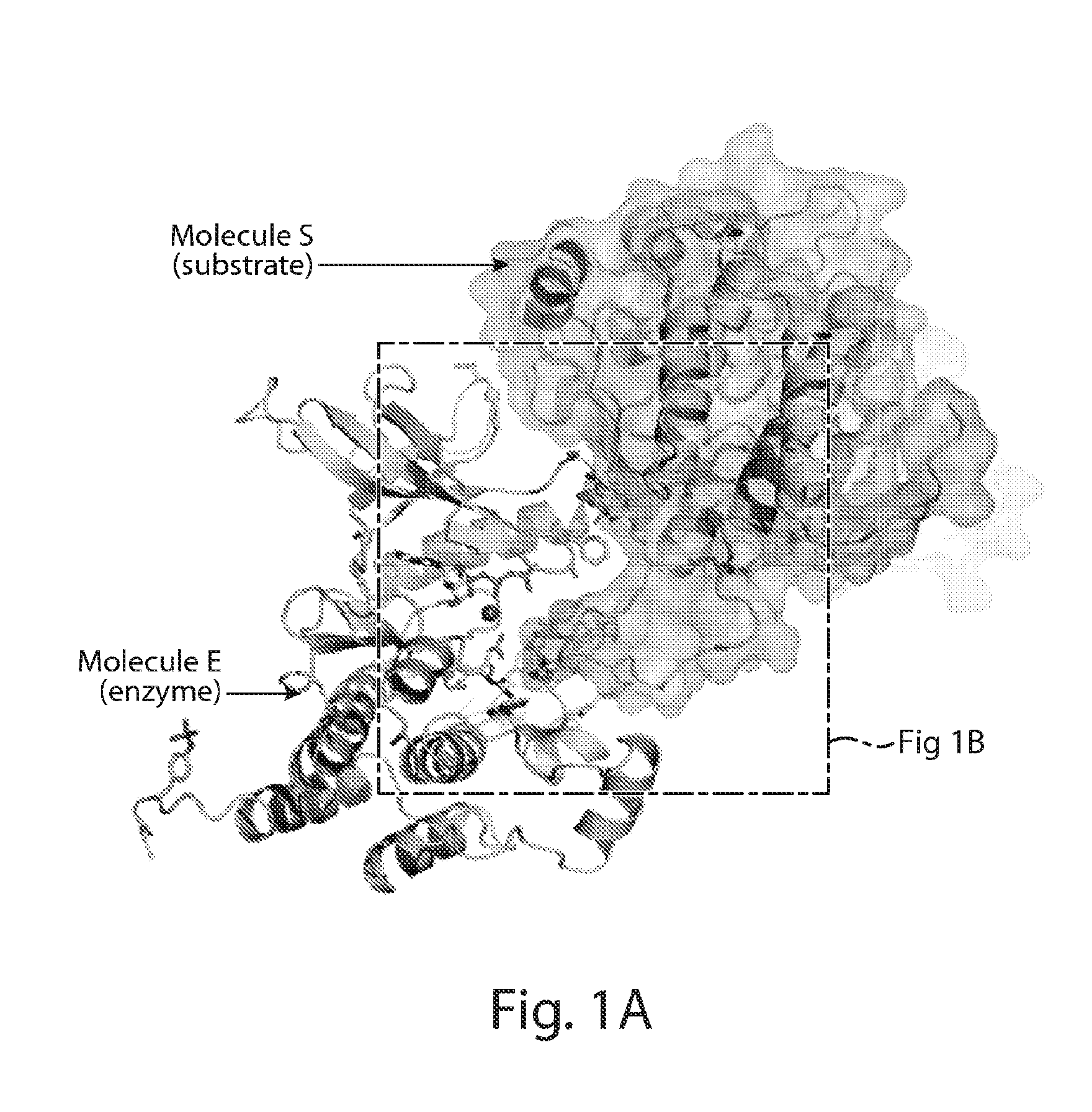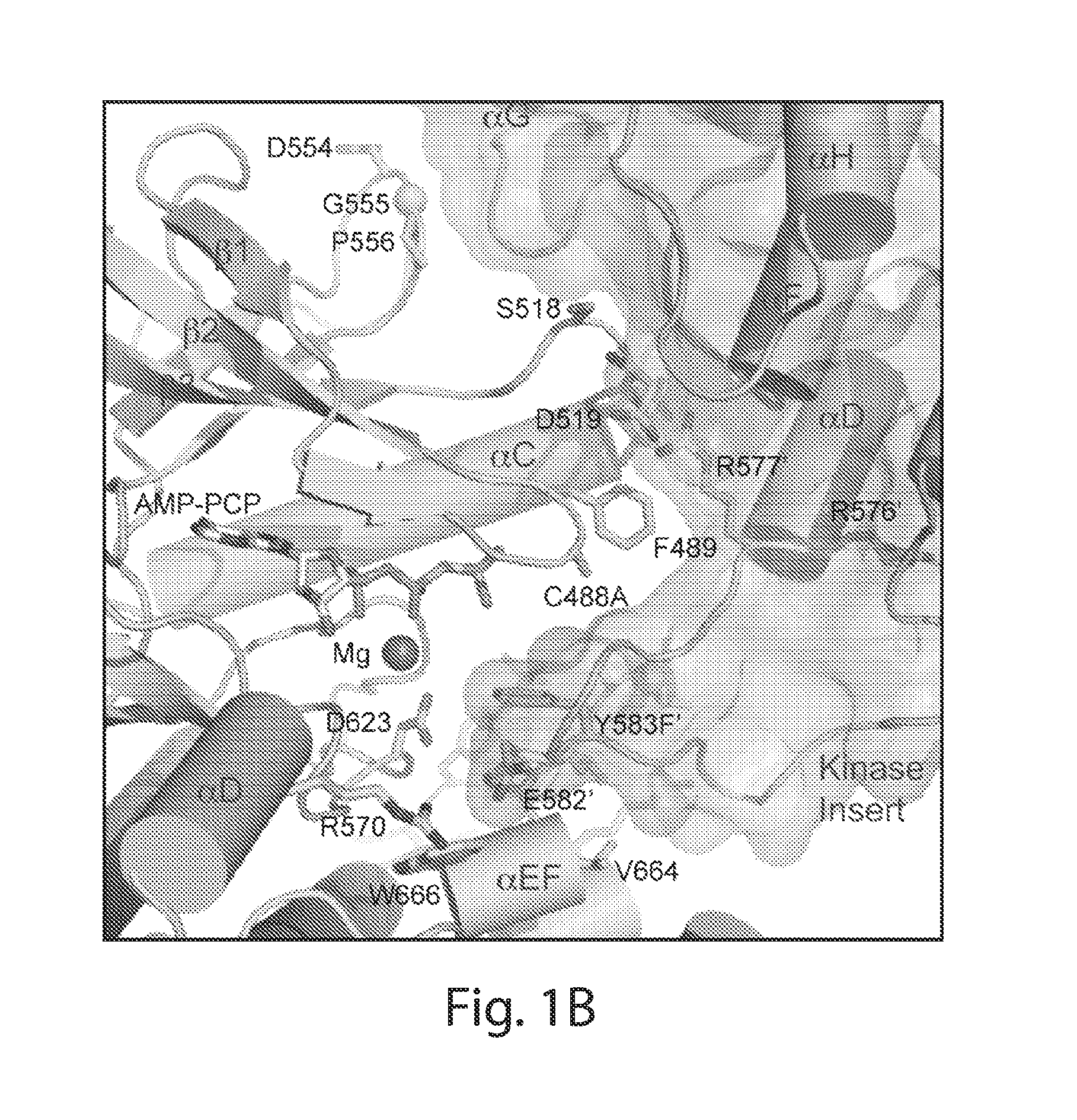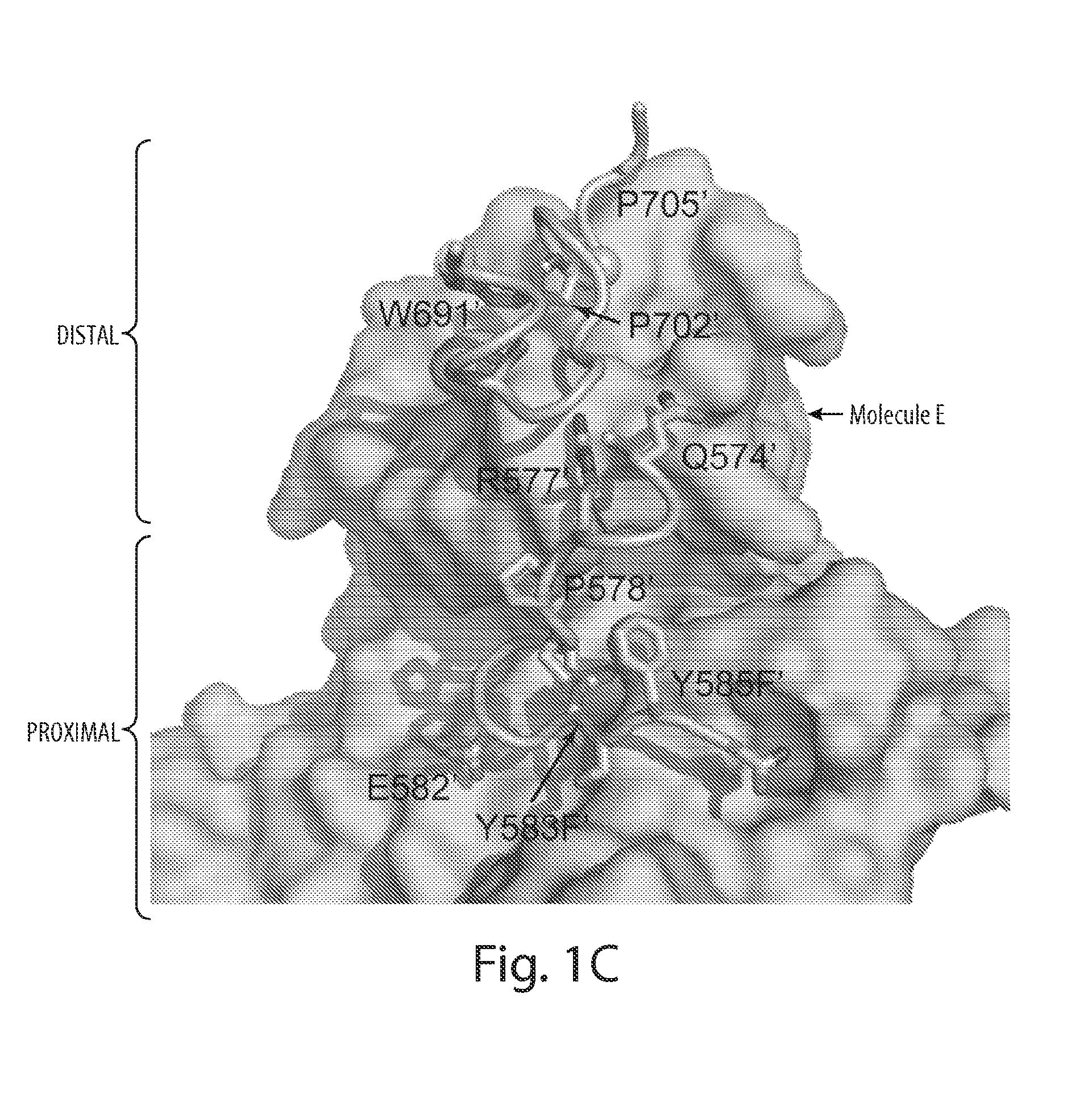Inhibitors of receptor tyrosine kinases (RTK) and methods of use thereof
- Summary
- Abstract
- Description
- Claims
- Application Information
AI Technical Summary
Benefits of technology
Problems solved by technology
Method used
Image
Examples
example 1
Asymmetric Dimerization Interface During Autophosphorylation of FGFR1
[0315]The structure of activated FGFR1 kinase in complex with a phospholipase Cγ (PLCγ) fragment (Bae et al. (2009) Cell, 138(3):512-524) shows that two symmetry-related activated kinase domains form an asymmetric dimer which illustrates in vivo trans-autophosphorylation of Y583 in the kinase insert region (FIG. 1A and FIG. 1B). The asymmetric arrangement of the two kinase molecules is mediated by an interface formed between the activation segment, the tip of nucleotide-binding loop, the β3-αC loop, the β4-β5 loop and the N-terminal region of helix αC in a kinase molecule that serves as an enzyme (E), and the kinase insert and residues between C-lobe helices αF and αG in a second kinase molecule serving as a substrate (S) (FIG. 1C and FIG. 1D). Importantly, R577, a residue close to the kinase insert region of the substrate molecule, contributes to this interface (FIG. 1B). The interface buries approximately 800 Å2 ...
example 2
In Vitro Tyrosine Kinase Activity of the R577E FGFR1 Mutant
[0318]To investigate the in vitro effects of R577E mutation (FGFR1-RE) autophosphorylation experiments using wt-FGFR1 and FGFR1-RE kinase domains were conducted. Purified FGFR1 kinase domains were incubated with ATP and Mg2+ at room temperature and monitored at different times by stopping the trans phosphorylation reaction with EDTA and running all samples on a non-reducing native gel (FIG. 3A and FIG. 3B). The reaction profiles of wt-FGFR1 and FGFR1-RE in native gels clearly showed that trans phosphorylation and the reverse dephosphorylation reaction of FGFR1-RE were substantially retarded when compared to those of wt-FGFR1 kinase domain. Trans phosphorylation of wt-FGFR1 kinase domain took place within 10 minutes, reaching a fully phosphorylated state, and then underwent the reverse dephosphorylation reaction. This contrasts with FGFR1-RE, which became fully phosphorylated within 30 minutes and then underwent the reverse r...
example 3
Tyrosine Autophosphorylation of the R577E Mutant is Strongly Compromised in Living Cells
[0320]Autophosphorylation of WT or the R577E FGFR1 mutant in FGF stimulated live cells were compared. Stable L6 cell lines matched for expression level of wt-FGFR1 or FGFR1-RE were stimulated with different FGF concentrations for 10 minutes at 37° C. (FIG. 3D) or with 100 ng / ml FGF at different time points (FIG. 3E). The level of receptor tyrosine phosphorylation was determined by subjecting lysates from unstimulated or FGF stimulated cells to immunoprecipitation with anti-FGFR1 antibodies followed by immunoblotting with anti-pTyr antibodies. FGF stimulation of cells expressing wt-FGFR1 resulted in ligand-dependent receptor tyrosine phosphorylation. By contrast, FGF stimulation of cells expressing FGFR1-RE resulted in a very weak phosphorylation even at the highest dose of the ligand. The drastic reduction in tyrosine autophosphorylation of FGFR1-RE in vivo, is not caused by the loss of its intri...
PUM
| Property | Measurement | Unit |
|---|---|---|
| Fraction | aaaaa | aaaaa |
| Molar density | aaaaa | aaaaa |
| Molar density | aaaaa | aaaaa |
Abstract
Description
Claims
Application Information
 Login to View More
Login to View More - R&D
- Intellectual Property
- Life Sciences
- Materials
- Tech Scout
- Unparalleled Data Quality
- Higher Quality Content
- 60% Fewer Hallucinations
Browse by: Latest US Patents, China's latest patents, Technical Efficacy Thesaurus, Application Domain, Technology Topic, Popular Technical Reports.
© 2025 PatSnap. All rights reserved.Legal|Privacy policy|Modern Slavery Act Transparency Statement|Sitemap|About US| Contact US: help@patsnap.com



